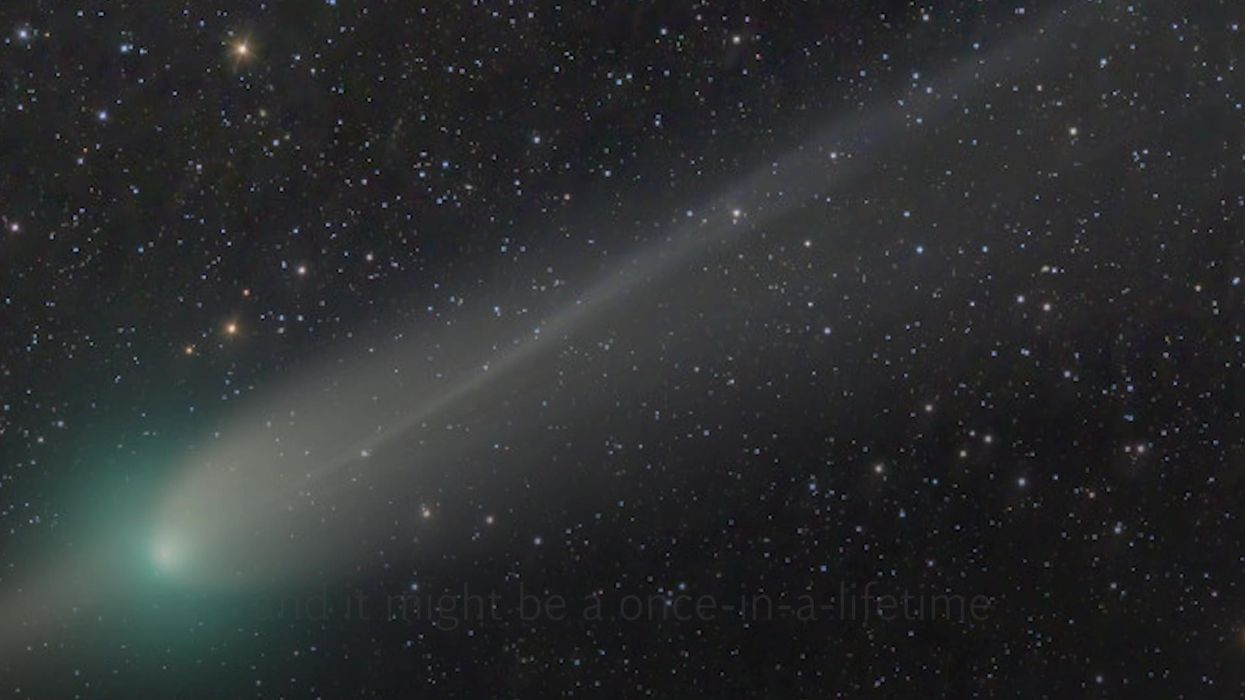Becca Monaghan
Feb 01, 2023
What is a ‘green comet' and where can you see it?
content.jwplatform.com
A rare green comet is set to make its closest pass by Earth this week – and some lucky spectators might be able to get a glimpse of it.
The comet, known by its scientific name 'C/2022 E3 (ZTF)', was last seen around 50,000 years ago. It will come closest to Earth on Wednesday 1 February, at around 45 million kilometres.
The icy ball orbits the sun once every 50,000 years. The last time was during the Stone Age, a time Neanderthals roamed Earth.
Dr Greg Brown, an astronomer at the Royal Observatory Greenwich, said: "Long-period comet C/2022 E3 is currently speeding through the solar system and won’t return for at least 50,000 years, assuming it ever does, so it’s your once-in-a-lifetime chance to see it.
"Its path across our sky is taking it through the constellation of Draco the dragon and will be passing between the two bears, Ursa Major and Ursa Minor, in late January and into early February."
Sign up for our free Indy100 weekly newsletter
And now, for the all-important question: How can you see it?
The comet has recently become bright enough to see with the naked eye in areas with minimal light pollution. Its green glow is a result of ultraviolet radiation from the sun lighting up the gases surrounding the comet’s surface.
While it's very difficult to predict how bright a comet can be, some reports have suggested there have already been sightings without a telescope.
To try and get a glimpse, it's best to head out in the evening to somewhere really dark, where no city lights are present and look out for a smear in the sky.
It is said to be best viewed after midnight, as this is when it reaches its highest point in the sky.
Dr Brown told PA: "While it may yet become possible to see it with the unaided eye from an extremely dark site, you are much better off pointing a pair of binoculars or a small telescope at it.
"For observers in the UK, head out after midnight when the comet will be highest in the sky and try and find the faint greenish light coming from it.
"Easiest to see will be the brighter head of the comet, but, if you are lucky, you may spot one of its two tails sweeping out from it, each made of material being jettisoned from its rapidly warming icy surface."
Have your say in our news democracy. Click the upvote icon at the top of the page to help raise this article through the indy100 rankings.
Top 100
The Conversation (0)














